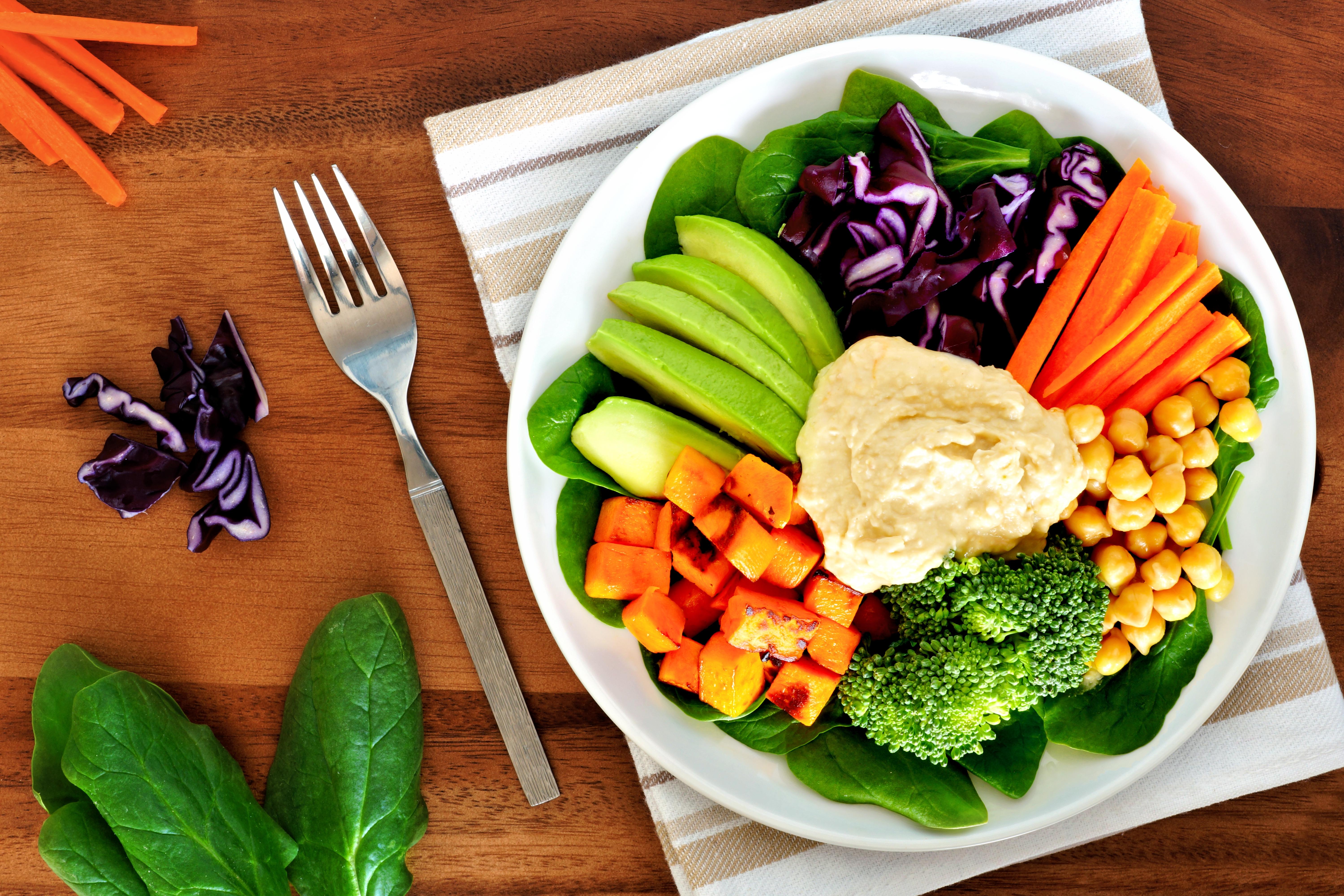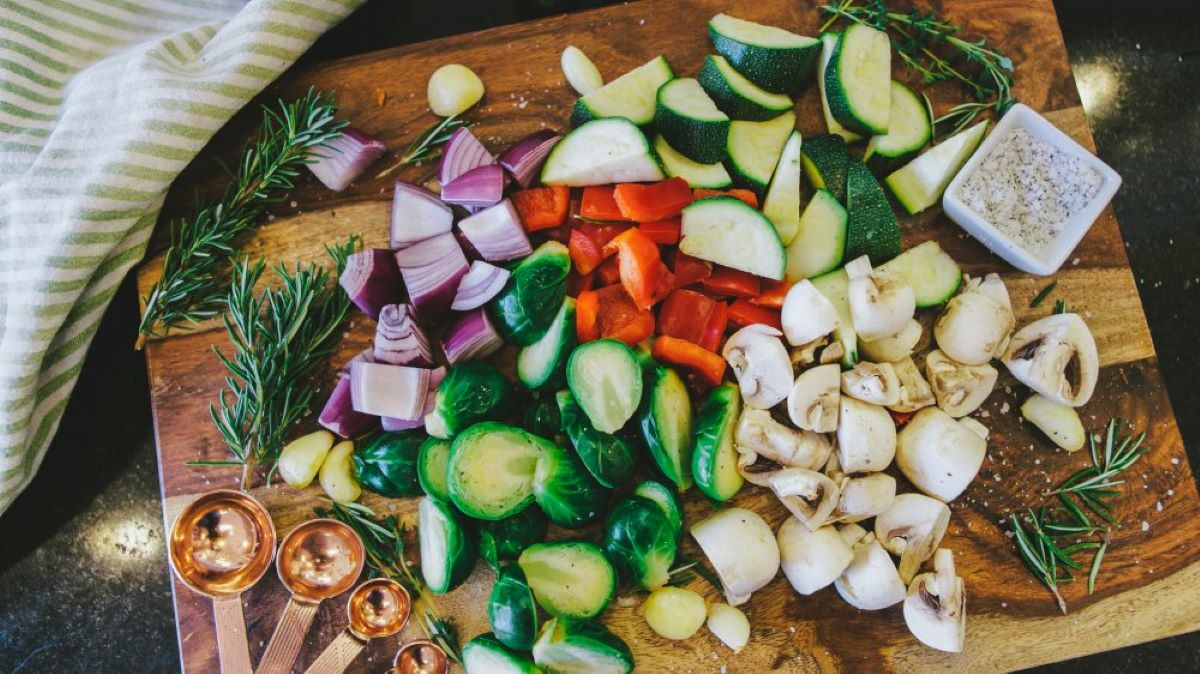Home>Gardening News and Trends>Latest News>How To Like Vegetables


Latest News
How To Like Vegetables
Modified: January 22, 2024
Discover the latest news on how to like vegetables and incorporate them into your diet. Explore tips, recipes, and strategies to make vegetables enjoyable and nutritious.
(Many of the links in this article redirect to a specific reviewed product. Your purchase of these products through affiliate links helps to generate commission for Chicagolandgardening.com, at no extra cost. Learn more)
Table of Contents
- Introduction
- Benefits of Eating Vegetables
- Tips for Preparing Vegetables
- Experiment with Different Cooking Methods
- Add Vegetables to Your Favorite Dishes
- Sneak Vegetables into Your Meals
- Make Eating Vegetables Fun and Exciting
- Find Delicious Vegetable Recipes
- Get Creative with Vegetable Salads
- Overcome Texture Issues with Vegetables
- Conclusion
Introduction
Vegetables are often regarded as a necessary evil when it comes to healthy eating. Many people struggle to incorporate them into their diet due to a dislike for their taste or texture. However, learning to enjoy vegetables is essential for overall well-being. Not only are they packed with essential nutrients, but they also offer numerous health benefits that can improve your quality of life.
In this article, we will explore various strategies to help you develop a liking for vegetables. From simple preparation tips to creative cooking methods, we will cover a range of techniques to make vegetables more appealing. Whether you’re a picky eater or just looking for ways to add more greens to your meals, these tips will transform your relationship with vegetables.
By incorporating vegetables into your diet, you can maintain a healthy weight, reduce the risk of chronic diseases, and increase your energy levels. Vegetables are low in calories and high in fiber, which helps you feel fuller for longer and aids in weight management. They are also rich in vitamins, minerals, and antioxidants that support your immune system and contribute to overall vitality.
If you’ve struggled to enjoy vegetables in the past, don’t worry – you’re not alone. Many people have preconceived notions about the taste and texture of certain vegetables, but with a little bit of creativity and experimentation, you can find ways to make them more enjoyable.
Benefits of Eating Vegetables
Eating vegetables offers a wide range of health benefits that can transform your well-being. Here are some key reasons to incorporate vegetables into your diet:
- Nutrient Rich: Vegetables are packed with essential vitamins, minerals, and antioxidants. They provide a wide array of nutrients that are crucial for proper functioning of your body.
- Weight Management: Vegetables are low in calories and high in fiber, making them an excellent choice for weight management. They provide volume to your meals without adding a significant number of calories.
- Heart Health: Many vegetables are rich in heart-healthy nutrients, such as potassium and fiber, which can help lower blood pressure and reduce the risk of cardiovascular diseases.
- Improved Digestion: The fiber content in vegetables aids in digestion and promotes regular bowel movements. This can help prevent constipation and promote a healthy gut.
- Reduced Risk of Chronic Diseases: Regular consumption of vegetables has been linked to a reduced risk of chronic illnesses such as type 2 diabetes, certain types of cancers, and age-related macular degeneration.
- Increased Energy: The vitamins and minerals found in vegetables provide a natural energy boost. By fueling your body with nutrient-dense foods, you can experience enhanced vitality and stamina.
- Strong Immune System: Vegetables contain antioxidants, such as vitamin C and beta-carotene, which help strengthen your immune system and protect against infections and diseases.
- Improved Skin Health: The vitamins and antioxidants found in vegetables contribute to healthy, glowing skin. They can help reduce wrinkles, promote collagen production, and protect against sun damage.
- Increased Hydration: Many vegetables have a high water content, which helps you stay hydrated. Proper hydration is essential for maintaining optimal bodily functions.
These are just a few of the many benefits that vegetables offer. By incorporating a variety of vegetables into your meals, you can nourish your body, support your overall health, and enjoy a wide range of flavors and textures.
Tips for Preparing Vegetables
Preparing vegetables properly can make a world of difference in taste and texture. Here are some tips to help you make the most of your vegetables:
- Fresh is Best: Choose fresh vegetables whenever possible. They have a vibrant flavor and are packed with nutrients. Look for crisp and brightly colored options.
- Wash Thoroughly: Rinse your vegetables well under cold running water to remove any dirt or pesticides. This is particularly important for vegetables that are eaten raw or have edible skins.
- Peel and Trim: Remove any tough or inedible parts of the vegetables, such as stems, skin, or outer leaves. Use a sharp knife or a vegetable peeler for this task.
- Preserve Nutrients: To retain the maximum amount of nutrients in your vegetables, opt for cooking methods that require minimal water and shorter cooking times, such as steaming or stir-frying.
- Cut Uniformly: When cutting vegetables, try to make them as uniform in size as possible. This will ensure even cooking and prevent some pieces from becoming overcooked while others remain undercooked.
- Blanch for Crispness: For vegetables like broccoli or asparagus, blanching them in boiling water for a short period and then transferring them to ice water can help preserve their crispness and vibrant color.
- Roast for Flavor: Roasting vegetables in the oven with a drizzle of olive oil, salt, and pepper can enhance their natural flavors and add a delicious caramelized taste.
- Season Well: Don’t be afraid to add herbs, spices, or other seasonings to your vegetables. Experiment with different flavor combinations to find what you enjoy the most.
- Use Different Textures: Incorporate a variety of textures into your vegetable dishes. Mix crisp and crunchy vegetables with softer ones to create interesting and satisfying combinations.
- Store Properly: To maintain the freshness of your vegetables, store them in a cool and dry place. Some vegetables, like leafy greens, can be stored in the refrigerator to prolong their shelf life.
Becoming familiar with these preparation techniques can make a significant difference in how you perceive vegetables. With a little bit of effort and creativity, you can transform plain vegetables into enticing and delicious meals.
Experiment with Different Cooking Methods
Cooking methods play a crucial role in the taste and texture of vegetables. By experimenting with different techniques, you can discover new flavors and find the cooking method that best suits your preferences. Here are some cooking methods to try:
- Steaming: Steaming vegetables helps to preserve their natural flavor, color, and nutrients. It’s a gentle cooking method that can be done using a steamer basket or by placing vegetables in a covered pot with a small amount of water.
- Stir-frying: Stir-frying is a quick and flavorful way to cook vegetables. Heat a small amount of oil in a pan or wok, add your favorite vegetables, and cook them over high heat while constantly stirring.
- Grilling: Grilling vegetables adds a smoky and charred flavor that can be incredibly delicious. Brush your vegetables with oil and place them directly on the grill or use a grill pan.
- Baking: Baking or roasting vegetables in the oven can bring out their natural sweetness. Toss them with some olive oil, seasonings, and spread them out on a baking sheet. Bake at a moderate temperature until they are tender and slightly caramelized.
- Sautéing: Sautéing vegetables in a pan with a small amount of oil or butter over medium-high heat can result in a tasty and quick side dish. It’s a great way to achieve a slightly crunchy texture.
- Blanching: Blanching involves briefly boiling vegetables and then transferring them to an ice bath to halt the cooking process. It helps maintain a vibrant color and crispness.
- Microwaving: Microwaving is a convenient and time-saving option for cooking vegetables. Place them in a microwavable dish with a little water, cover, and cook on high until they are tender.
- Frying: Although deep-frying vegetables may not be the healthiest option, a light pan-frying technique can create a crispy and flavorful result. Use minimal oil and watch the heat to ensure they don’t become too greasy.
Each cooking method brings out unique flavors and textures in vegetables. By trying different techniques, you can discover new ways to enjoy your favorite vegetables and expand your culinary repertoire.
Add Vegetables to Your Favorite Dishes
One of the easiest ways to incorporate more vegetables into your diet is by adding them to your favorite dishes. By doing so, you can enjoy the flavors you love while increasing your vegetable intake. Here are some ideas to get you started:
- Pasta: Toss sautéed or roasted vegetables into your favorite pasta dishes. Bell peppers, zucchini, spinach, and cherry tomatoes work well in pasta sauces.
- Stir-fries: Add a variety of colorful vegetables to your stir-fries. Vegetables like broccoli, snap peas, mushrooms, carrots, and bell peppers can bring extra crunch, flavor, and nutrition to your dish.
- Sandwiches and Wraps: Layer your sandwiches or wraps with fresh vegetables like lettuce, tomatoes, cucumbers, or sprouts to add a refreshing crunch.
- Pizza: Load up your pizza with an assortment of vegetables. Bell peppers, onions, mushrooms, spinach, and olives can add a burst of flavor and texture to your favorite slice.
- Burgers: Top your burgers with slices of tomato, lettuce, onions, and avocados. You can also make veggie burgers using grated or mashed vegetables as a base.
- Omelets and Scrambles: Mix in chopped vegetables like spinach, mushrooms, bell peppers, or onions into your omelets or scrambled eggs for a nutritious and filling breakfast.
- Casseroles: Incorporate vegetables into casseroles and baked dishes. Consider adding chopped broccoli, cauliflower, or peas to dishes like lasagna, shepherd’s pie, or mac and cheese.
- Soups and Stews: Bulk up your soups and stews with an abundance of vegetables. Carrots, celery, onions, corn, peas, and beans can add both flavor and nutrition to your comforting bowl of soup.
- Tacos and Burritos: Fill your tacos or burritos with a medley of vegetables. Salsa, guacamole, lettuce, tomatoes, and onions can add freshness and texture to your Mexican-inspired dishes.
- Rice and Grain Bowls: Create colorful and flavorful rice or grain bowls by adding steamed or roasted vegetables. Toss in some roasted sweet potatoes, grilled asparagus, or sautéed mushrooms for added depth.
By incorporating vegetables into your favorite dishes, you not only enhance their nutritional value but also diversify their flavors and textures. Explore different combinations and get creative with your culinary creations.
Sneak Vegetables into Your Meals
If you or your family members have a strong aversion to vegetables, sneaking them into meals can be a clever way to increase their consumption without even realizing it. Here are some sneaky ideas to incorporate more vegetables into your meals:
- Blend into Smoothies: Add a handful of spinach or kale to your fruit smoothies. The sweetness of the fruits will mask the taste of the vegetables, making it a great way to boost your nutrient intake.
- Hide in Sauces: Puree cooked vegetables like carrots, zucchini, or cauliflower and incorporate them into pasta sauces, soups, or stews. They blend seamlessly into the dish, adding nutrition without altering the taste.
- Mix into Meatballs or Burgers: Finely grate vegetables like carrots, zucchini, or mushrooms and mix them into your meatballs or burger patties. They add moisture, flavor, and extra nutrients.
- Replace Carbs with Vegetables: Instead of traditional pasta or noodles, use spiralized vegetables like zucchini or carrots. They provide a low-carb alternative while increasing your vegetable intake.
- Stuff Vegetables: Hollow out vegetables like bell peppers, zucchini, or squash and stuff them with a mixture of cooked vegetables, grains, and lean protein. Bake in the oven for a nutrient-dense meal.
- Use Cauliflower Rice: Replace traditional rice with cauliflower rice in your favorite stir-fries, fried rice dishes, or even as a side dish. It’s a low-calorie and nutrient-packed alternative.
- Make Hidden Veggie Snacks: Create homemade snacks like veggie-packed muffins or energy bars by adding pureed vegetables like spinach, carrots, or sweet potatoes to the batter.
- Try Veggie Noodles: Use a spiralizer to turn vegetables like zucchini, carrots, or beets into noodles. Quickly sauté or blanch them and serve with your favorite sauces or as a salad base.
- Add to Casseroles or Lasagna: Finely chop vegetables like mushrooms, spinach, or bell peppers and add them to casseroles, lasagna, or meatloaf. They blend in with other ingredients and enhance the nutritional value.
- Replace Pizza Crust with Veggies: Use cauliflower crust or zucchini slices as a base for your homemade pizzas. Load them up with your favorite toppings for a healthier twist.
These sneaky techniques are great ways to introduce vegetables into meals without potentially triggering resistance. By gradually increasing the amount of vegetables in your recipes, you can develop a taste for them and appreciate their benefits.
Make Eating Vegetables Fun and Exciting
Eating vegetables doesn’t have to be a chore. With a little creativity, you can make the experience enjoyable and exciting. Here are some ideas to make eating vegetables more fun:
- Create Veggie Art: Get creative and use different colored vegetables to make fun designs or patterns on your plates. Play with shapes and arrangements to make the vegetables visually appealing.
- Have a Veggie Tasting: Try different types of vegetables and have a tasting session. Encourage everyone to describe the taste, texture, and appearance of each vegetable. This can make trying new vegetables more exciting.
- Grow Your Own: Start a vegetable garden in your backyard or even a small container garden on your windowsill. Involving yourself in the process of growing vegetables can increase your appreciation for them.
- Make Veggie Skewers: Thread colorful vegetable chunks onto skewers and grill or roast them for a tasty and visually appealing side dish. Let everyone create their own kebabs to make it interactive.
- Play with Colors: Incorporate a variety of colorful vegetables into your meals. The vibrant hues will make your dishes visually appealing and more exciting to eat.
- Try Veggie Chips: Slice vegetables like sweet potatoes, beets, or kale into thin slices and bake them until crispy. They make a healthy alternative to regular chips and can be seasoned with different spices.
- Make Vegetable Sushi: Use nori sheets, rice, and an assortment of thinly sliced vegetables to create your own sushi rolls. It’s a fun and creative way to enjoy vegetables.
- Have a Food Challenge: Challenge yourself or your family members to try a new vegetable each week. Explore different recipes and cooking methods to find the most enjoyable way to prepare it.
- Play Veggie Games: Turn mealtime into a game by having a vegetable-themed trivia quiz or a “guess the vegetable” challenge. Make learning about vegetables entertaining for everyone.
- Host a Veggie Potluck: Invite friends or family members to a potluck where everyone brings a vegetable-based dish. It’s a great way to introduce new recipes and discover new favorite vegetables.
By making eating vegetables a fun and exciting experience, you can create positive associations and develop a genuine liking for them. Embrace your creativity and discover new ways to enjoy and appreciate the wonderful world of vegetables.
Find Delicious Vegetable Recipes
Exploring new vegetable recipes can open up a world of culinary possibilities and help you discover mouthwatering ways to enjoy vegetables. Here are some tips for finding delicious vegetable recipes:
- Online Recipe Websites: Browse popular recipe websites that specialize in vegetable-based dishes. Websites like Food Network, AllRecipes, and Epicurious offer a wide range of recipes to suit different tastes and preferences.
- Cookbooks: Invest in cookbooks that focus on vegetable-centric cooking. Look for titles that showcase creative and innovative recipes using a variety of vegetables.
- Social Media: Follow food bloggers, chefs, and health enthusiasts on platforms like Instagram and Pinterest. They often share tempting vegetable recipes along with visually appealing pictures.
- Join Recipe Communities: Become part of online communities or forums where members share their favorite vegetable recipes. These platforms can be a treasure trove of tried and tested recipes.
- Restaurant Menus: Take inspiration from restaurant menus that feature vegetable-centered dishes. You can recreate these recipes at home, adjusting the ingredients and flavors to suit your taste preferences.
- Local Farmers’ Markets: Visit your local farmers’ markets and chat with vendors. They can provide guidance on how to best prepare and cook specific vegetables, as well as recommend recipes.
- Family and Friends: Ask your family and friends for their favorite vegetable recipes. Sharing recipes within your inner circle can expose you to dishes that have been tasted and loved by those close to you.
- Food Magazines and Blogs: Subscribe to food magazines or follow reputable food blogs that publish vegetable-focused content. They often feature seasonal recipes and highlight the versatility of various vegetables.
- International Cuisine: Explore recipes from different cuisines around the world. Vegetables play a vital role in dishes like Indian curries, Mediterranean mezze, and Asian stir-fries, offering a range of unique flavors and cooking techniques.
- Adapt Existing Recipes: Look for recipes you already enjoy and find ways to add vegetables to them. For example, add vegetables like spinach or mushrooms to your favorite omelet or vegetable toppings to your pizza.
With countless sources available, finding delicious vegetable recipes has never been easier. Experiment, get creative, and don’t be afraid to try new flavor combinations to elevate your vegetable dishes.
Get Creative with Vegetable Salads
Vegetable salads offer a refreshing and versatile way to enjoy a variety of vegetables. By getting creative with your salad creations, you can transform a simple dish into a flavorful and satisfying meal. Here are some ideas to inspire you:
- Mix Colors and Textures: Combine different colored vegetables to create a visually appealing salad. Mix crisp lettuce with vibrant tomatoes, crunchy cucumbers, and creamy avocados for a delightful texture contrast.
- Add Protein: Boost the nutritional value of your salad by including a protein source. Top your salad with grilled chicken, salmon, boiled eggs, tofu, or chickpeas to make it more filling and satisfying.
- Incorporate Grains and Legumes: Add cooked grains like quinoa, barley, or couscous to your salad for extra texture and heartiness. Legumes such as lentils, beans, or edamame can also enhance the nutritional profile.
- Experiment with Dressings: Homemade dressings can elevate the flavors of your salad. Try different combinations of olive oil, vinegar, lemon juice, herbs, or spices to create unique and tasty dressings.
- Add Fruit: Fruits can bring a touch of sweetness and vibrancy to your salad. Consider adding sliced strawberries, mandarin oranges, apple slices, or pomegranate seeds for a burst of flavor.
- Include Cheese or Nuts: Add a sprinkle of feta, goat cheese, or Parmesan for a creamy and tangy element. Toasted nuts like almonds, walnuts, or pecans can provide a satisfying crunch.
- Try Different Vinaigrettes: Experiment with different types of vinaigrettes to dress your salad. Balsamic, honey mustard, raspberry, or citrus vinaigrettes can all bring unique flavors to your greens.
- Add Fresh Herbs: Fresh herbs are a fantastic way to infuse your salad with additional freshness and aroma. Try adding basil, mint, cilantro, or parsley to enhance the overall flavor profile.
- Roast or Grill Vegetables: Take your salad to the next level by incorporating roasted or grilled vegetables. Roasted asparagus, grilled bell peppers, or charred corn bring a smoky and caramelized flavor.
- Try Ethnic Flavors: Explore different cuisines and incorporate ethnic flavors into your salads. For example, add Middle Eastern flavors with chickpeas, feta cheese, olives, and a drizzle of tahini dressing.
Don’t be afraid to get creative with your vegetable salads. Mix and match ingredients, incorporate different textures, and experiment with various flavors to find combinations that excite your taste buds.
Overcome Texture Issues with Vegetables
Texture can play a significant role in people’s aversion to certain vegetables. However, with a few techniques and creative ideas, you can overcome texture issues and learn to enjoy a wider variety of vegetables. Here are some strategies to consider:
- Change the Cooking Method: Experiment with different cooking methods to alter the texture of vegetables. For example, if you dislike the mushiness of boiled vegetables, try roasting or grilling them for a crispy and caramelized texture.
- Combine with Other Ingredients: Mix vegetables with other ingredients to modify the overall texture. Incorporate vegetables into stir-fries, pasta dishes, or cooked grains where the textures of other ingredients can help balance out any textural concerns.
- Blend into Smoothies or Soups: If the texture of raw or cooked vegetables is a challenge, try blending them into smoothies or soups. This will create a smoother and more palatable texture while retaining the nutritional benefits.
- Grate or Shred: Use a grater or shredder to finely chop or shred vegetables. This can change the texture and make them less noticeable in dishes like salads, tacos, or wraps.
- Combine with Creamy or Crunchy Elements: Pair vegetables with elements that provide contrasting textures. For example, mix crunchy vegetables like cucumber or bell peppers with creamy dressings or add toasted nuts or seeds for extra crunch.
- Sauté for a Firmer Texture: Sautéing vegetables in a little oil or butter can help retain their firmness and provide a more satisfying texture. This method is particularly useful for vegetables like mushrooms, zucchini, or carrots.
- Try Different Cuts: Change the way you cut your vegetables to alter the texture. Thinly sliced or julienne cut vegetables can have a different mouthfeel compared to larger chunks or cubes.
- Experiment with Pickling: Pickling vegetables can change their texture and create a tangy flavor profile. Pickled cucumbers, radishes, or carrots can add a delightful crunch and zing to salads and sandwiches.
- Combine with Textured Ingredients: Incorporate textured ingredients alongside vegetables to provide a more enjoyable eating experience. Add beans, tofu, or cooked grains like quinoa or couscous to provide a satisfying bite.
- Try Different Vegetable Varieties: Not all vegetables have the same texture. Experiment with different varieties to find those that are more appealing to your taste and texture preferences.
By exploring different techniques and combinations, you can overcome texture issues with vegetables and find ways to incorporate them into your diet that suit your personal preferences and taste buds.
Conclusion
Incorporating vegetables into your diet is essential for maintaining a healthy lifestyle, but it doesn’t have to be a bland or unpleasant experience. By following the tips and strategies covered in this article, you can develop a liking for vegetables and make them a delicious and enjoyable part of your meals.
From learning to prepare vegetables with care and exploring different cooking methods to adding them to your favorite dishes and getting creative with salads, there are numerous ways to make vegetables more appealing. By experimenting with flavors, textures, and presentation, you can find the perfect combination that suits your taste buds.
Remember, vegetables offer an abundance of health benefits, including providing essential nutrients, supporting weight management, improving digestion, and reducing the risk of chronic diseases. By embracing vegetables, you nourish your body and support overall well-being.
So, don’t hesitate to try new vegetables, explore different recipes, and get creative in the kitchen. Start with small steps and gradually introduce more vegetables into your meals. With time, you may find that your taste buds adapt, and vegetables become an enjoyable and integral part of your diet.
Embrace the variety, flavors, and versatility that vegetables offer. With a little imagination and a willingness to experiment, you can transform your perception of vegetables and discover a whole new world of culinary possibilities and wellness.










